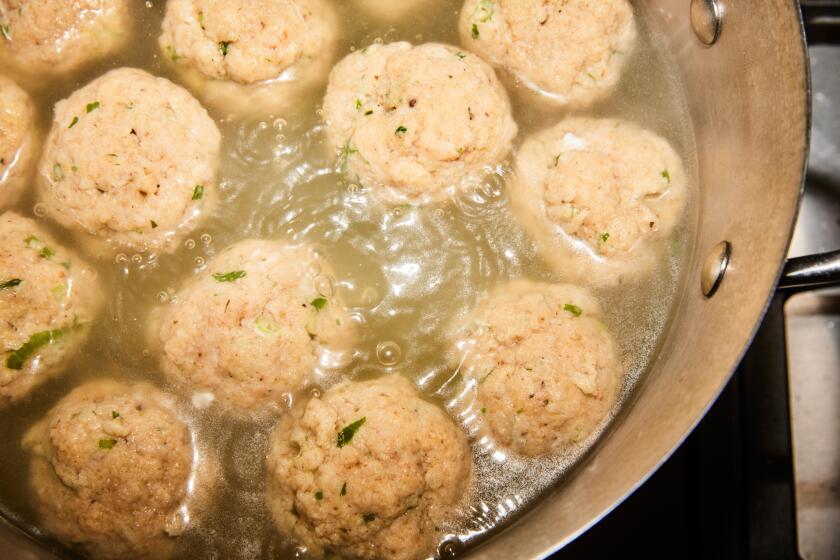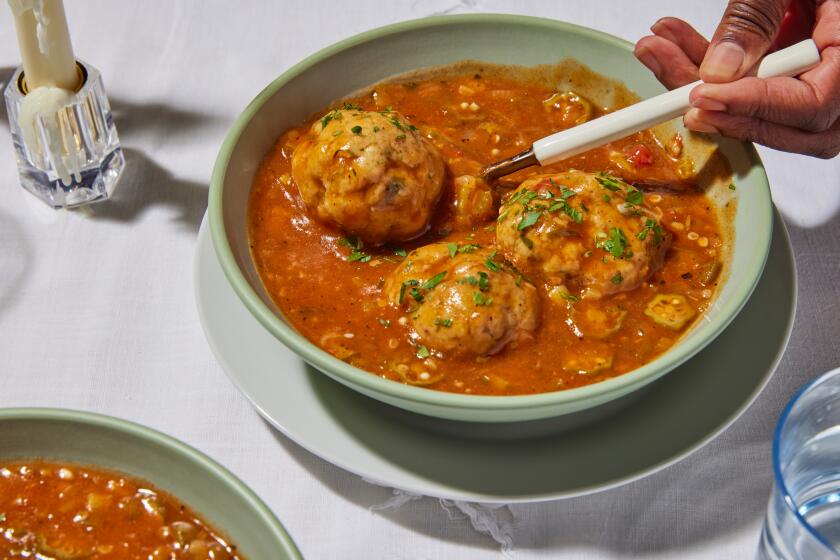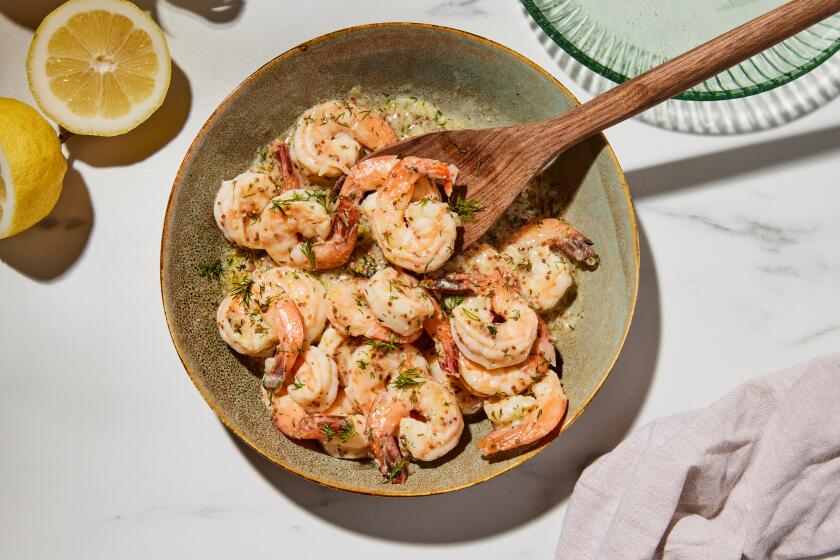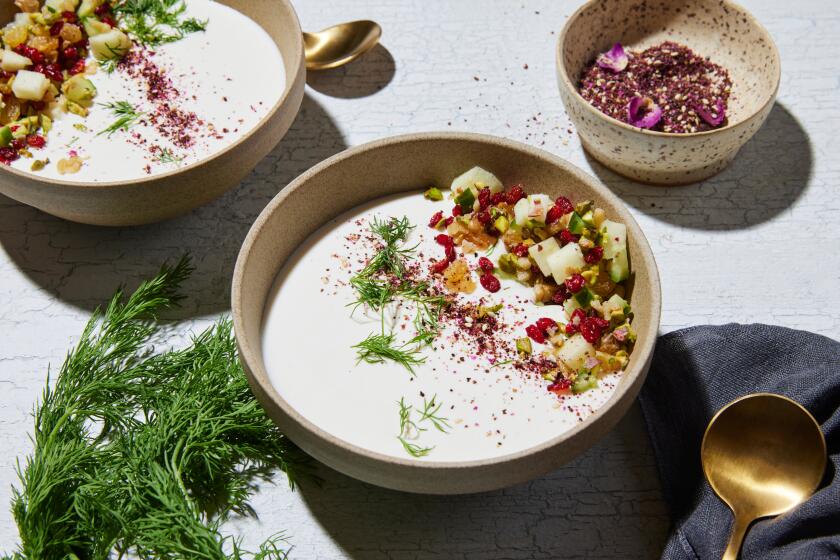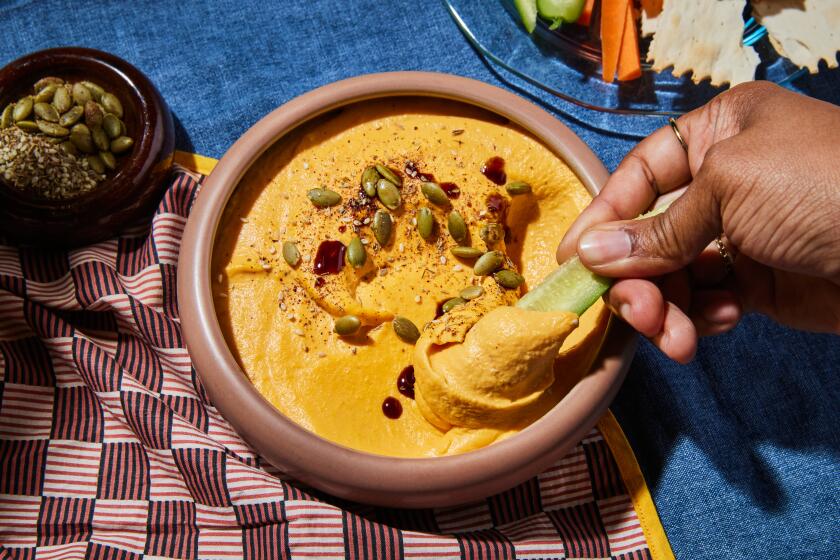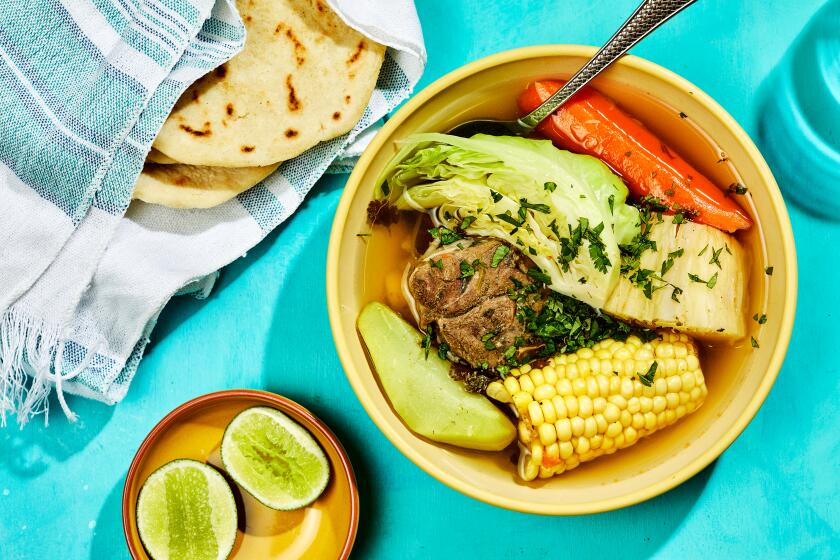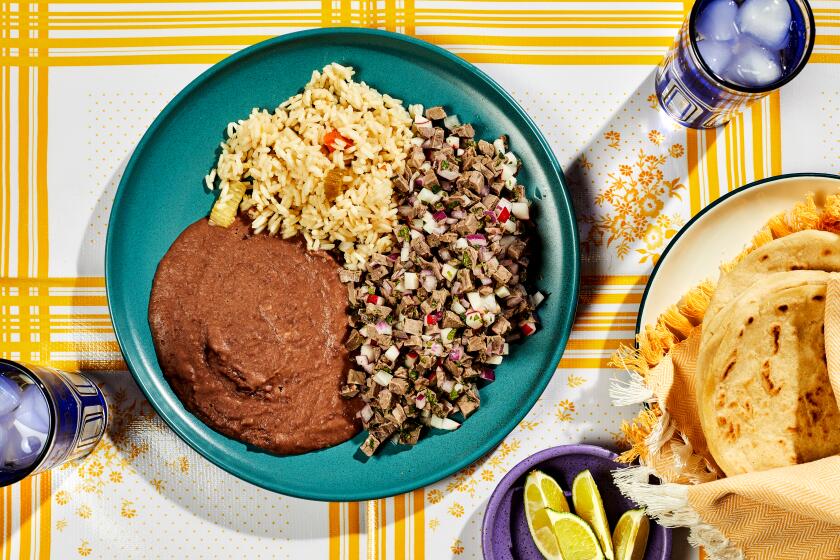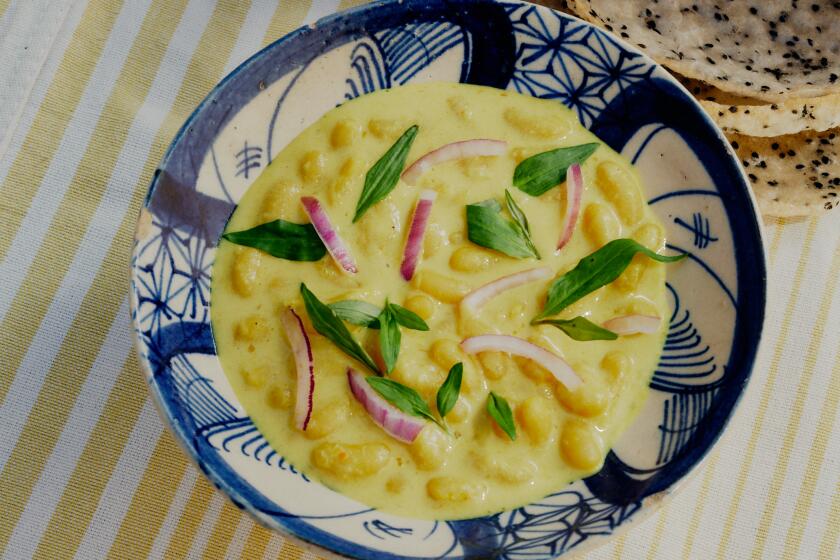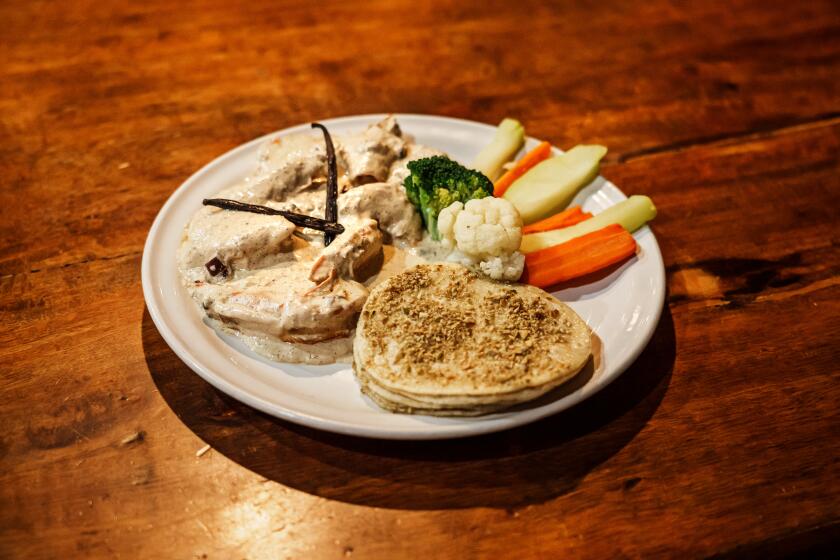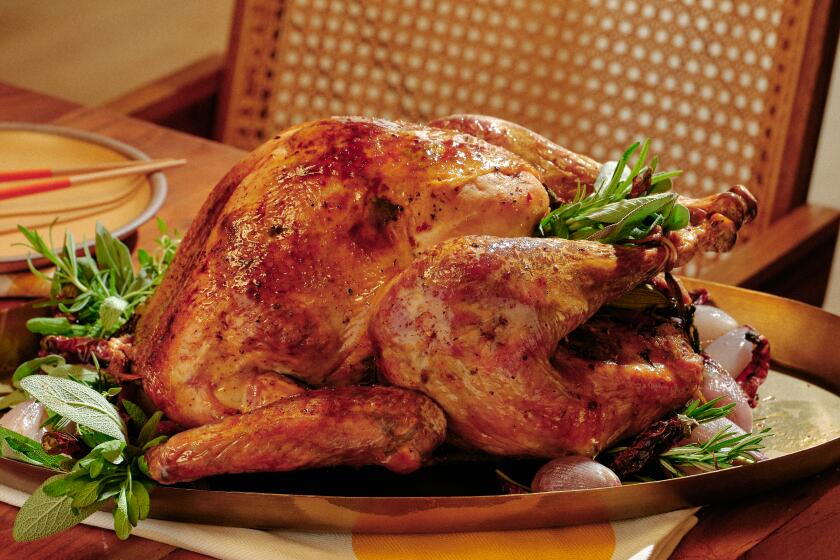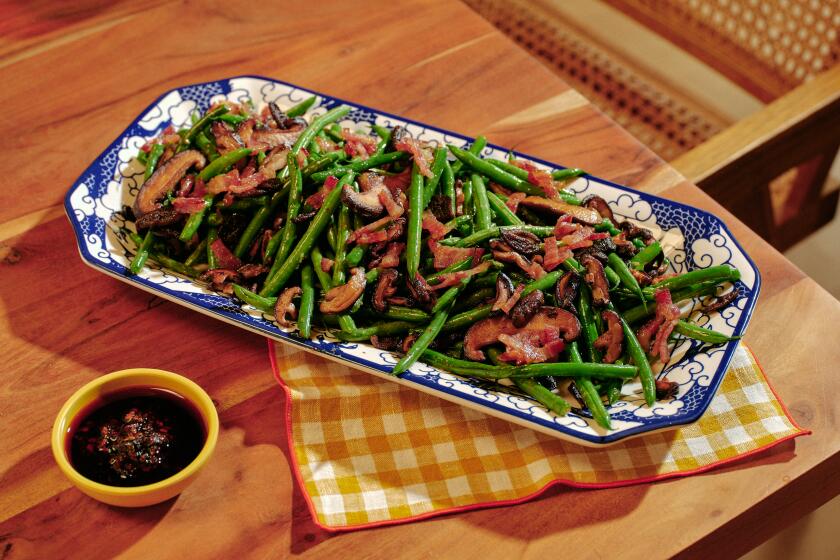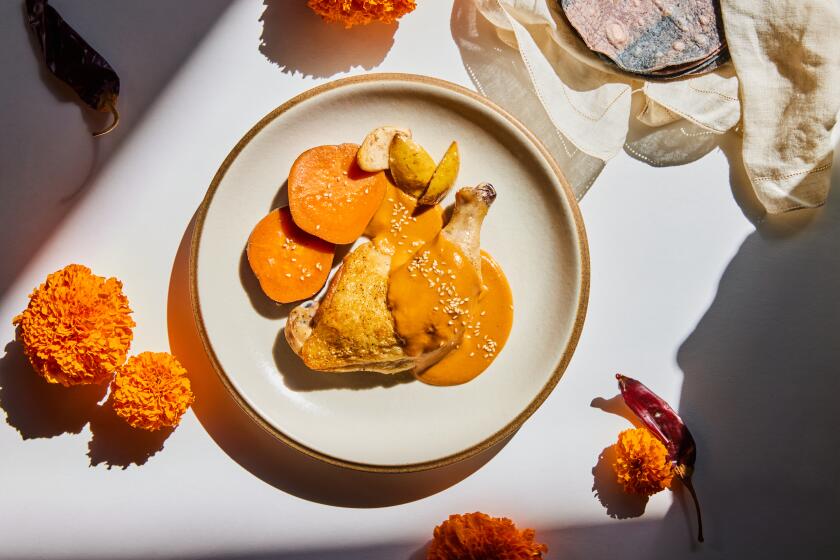Pomegranate-braised duck legs
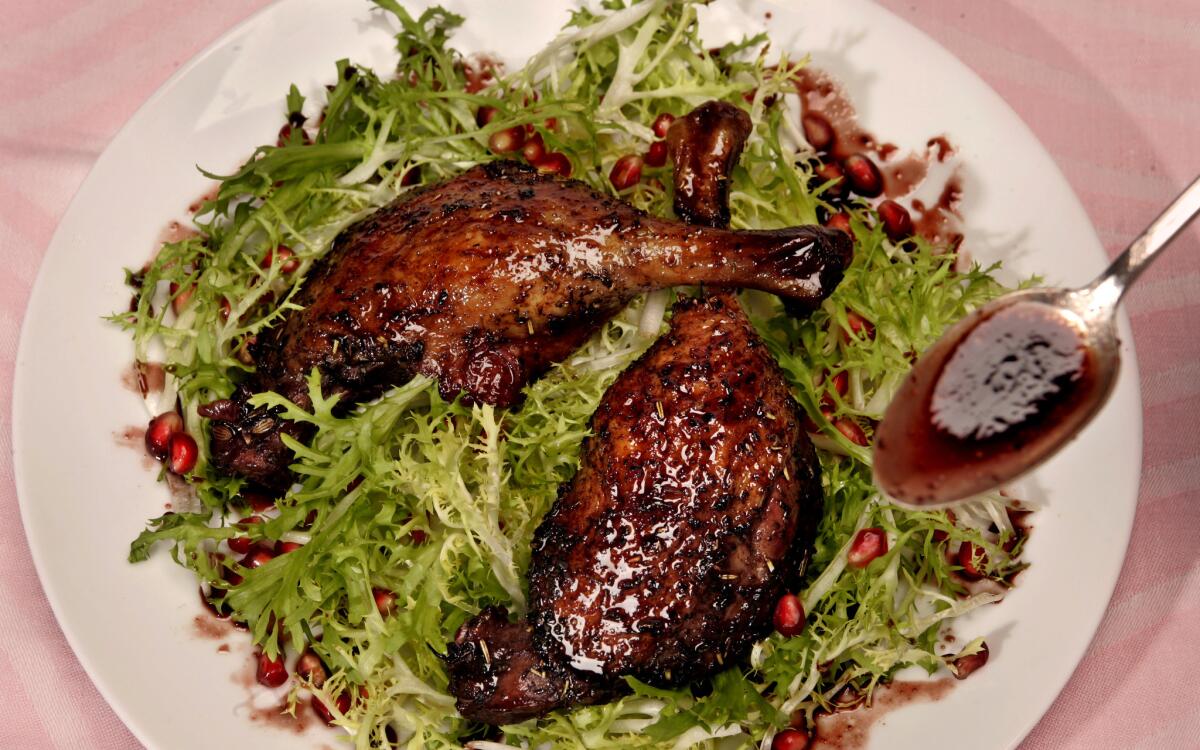
For anyone who thinks duck deserves better than orange juice and other syrupy sweetness, pomegranate works wonders. An old recipe for succulent duck legs from Bay Wolf restaurant in Oakland works even more brilliantly with pomegranates than with red wine. The legs are roasted, then braised so that the skin turns super-crispy and the flesh is sublimely tender and aromatic.
For pomegranate juice, break open pomegranates and carefully remove the seeds. Using either an immersion or regular blender, liquefy the seeds and strain the juice through a sieve. Or you can use bottled Pom juice.
From the story: Back to the pomegranate
Season the duck legs on both sides with salt and pepper along with the herbes de Provence. Arrange skin-side up on a rack on a baking sheet and let stand, uncovered, in the refrigerator for 1 hour.
Heat the oven to 375 degrees. Transfer the duck legs to a shallow baking dish just large enough to hold all of them in one layer. Roast 1 hour.
Meanwhile, in a small pan, bring the pomegranate juice and chipotle flakes just to a simmer. Remove from the heat and set aside.
After the duck legs have roasted for 1 hour, carefully drain off the fat from the baking dish and pour the warm pomegranate juice over the legs. Arrange the shallots around the legs. Return to the oven and bake 30 minutes longer, until the meat is tender and the skin is crispy.
Carefully pour the pan juices through a sieve into a small saucepan. Bring to a boil and cook until reduced by two-thirds. Arrange the greens on a platter or individual serving plates and top with the duck legs. Spoon a little sauce around them and garnish with a good handful of pomegranate seeds.
Get our Cooking newsletter.
Your roundup of inspiring recipes and kitchen tricks.
You may occasionally receive promotional content from the Los Angeles Times.

